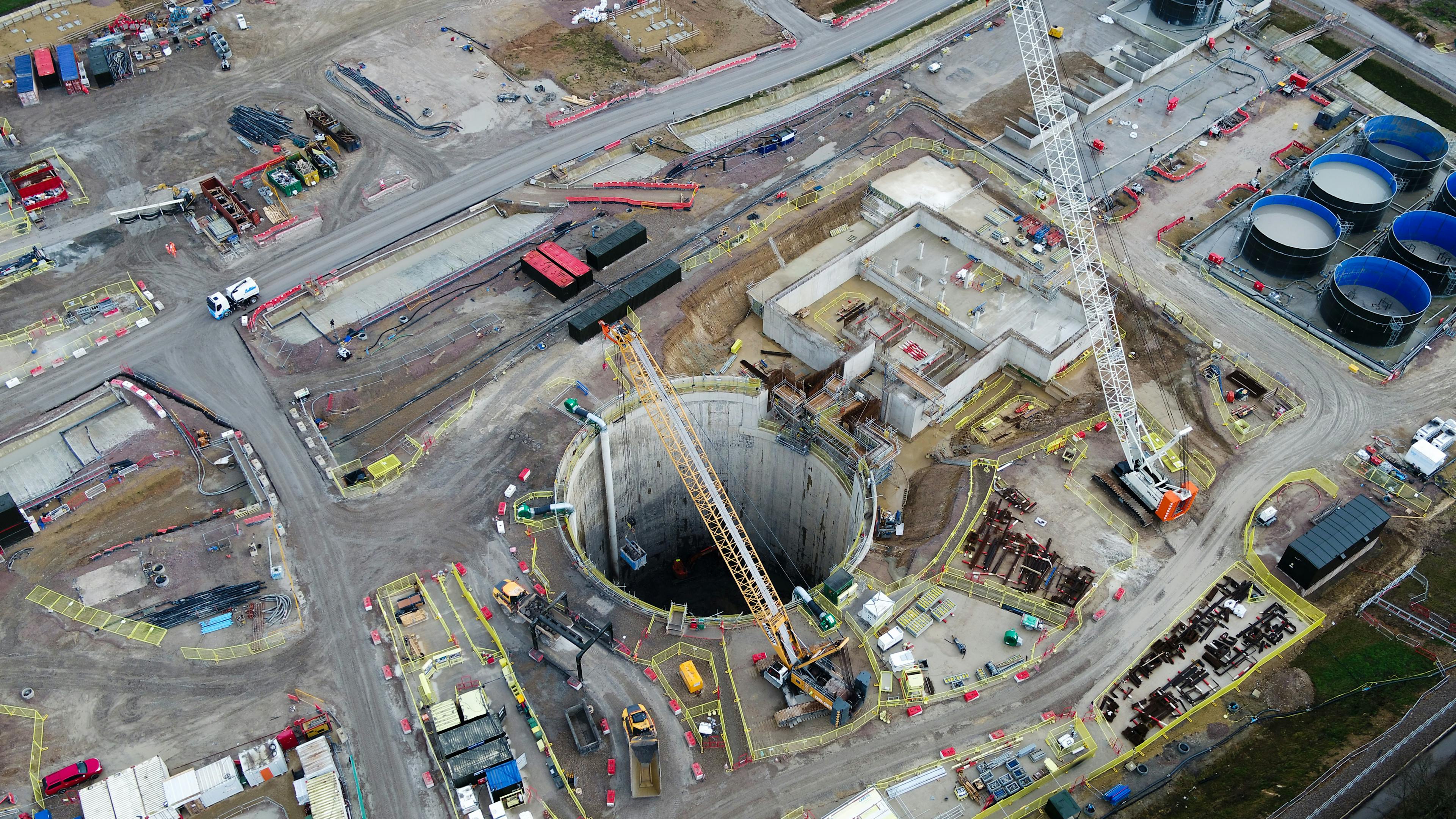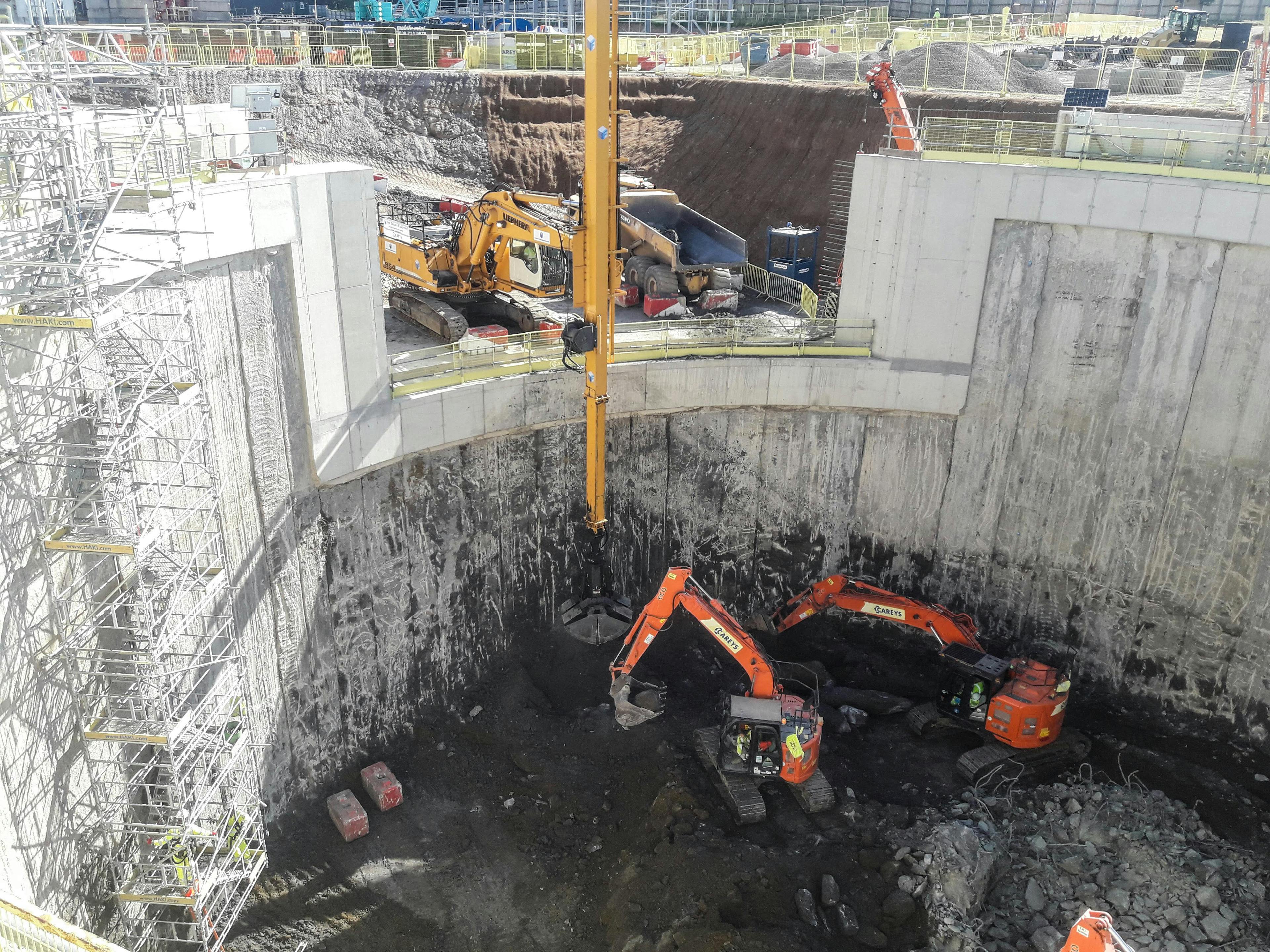
Woodsmith Mine
Careys was originally appointed principal contractor for the early phases by Sirius Minerals, which was subsequently acquired by Anglo-American, to whom we were novated. Careys applied new and innovative technology to complete specialist industrial concrete works at Woodsmith Mine. Located in Whitby, North Yorkshire, this is one of the largest underground mining projects in the UK.
Client
AngloAmericanLocation
WhitbyPrincipal Contractor
CareysThe master project overall - at £4bn - consists of a deep mine and associated transport, processing and shipping infrastructure development. The mine contains the greatest amount of high-grade polyhalite in the UK. The polyhalite – a unique mineral salt that has begun to gain traction as a fertilizer – is to be extracted via two mine shafts and transported on a conveyor belt, through an underground tunnel, to the surface. It will then be ready to be exported by sea to overseas markets.
The site is remote and so logistics, as well as conditions for our people, were somewhat challenging. Hence we started by extending the Whitby park and ride facility by 185 spaces in order to transport workers to the mine, thus ensuring that local people could be prioritised for employment.
Employing specialised equipment for the first time in the UK
Employing specialised equipment for the first time in the UK
Sinking three foreshafts at the main site
We were initially responsible for the first -120m of three foreshafts; excavating over 90,000m3 , pouring 45,000m3 of concrete and using 4,000t of reinforcement. Thorough research and planning allowed us to implement various techniques and procedures to achieving this as quickly, efficiently and safely as possible. Our various excavation techniques and equipment were modified and deployed to suit the specific requirements of the topography, timeline and conditions, such as the hydrogeologists’ specification that the earth was to remain dry to a depth of -120m. We created sophisticated 3D, 4D and VR simulations to examine a wide range of variables and hone the slipform technique. The technique not only saved time and costs but also increased worker safety by avoiding dangerous working conditions in any unfinished shaft.
The material transport system (MTS) shaft, which is designed to launch the tunnel boring machines (TBMs) that will drive one section of the 37km tunnel to transport the materials to the processing plant at Wilton, was excavated to -115m using a Herrenknecht vertical shaft sinking machine (VSM) and a
slipform secondary lining. This was the first use of this method and machinery in the UK and we broke the world record for the deepest shaft sunk using a VSM.
The slipform rig was set up near ground level, adding the top section of the shaft gradually over 12-hour shifts. The weight of the constructed section was hung by 9 sets of hydraulically controlled strands, with the rate of descent controlled until it reached -120m below ground. By using this system to continuously pour the concrete walls, simultaneously with the VSM’s excavation activity, we were able to create the MTS shaft more safely, rapidly and cost-effectively.
Efficiently and rapidly completing the initial phases of the mine’s vital service and production shafts
Efficiently and rapidly completing the initial phases of the mine’s vital service and production shafts
The service shaft was excavated to -120m and was sunk using a more traditional method with excavators, Brokks, concrete precast segments and underpinning. It was then lined from -120m to -48m using conventional sinking segmental lining with a slipform secondary lining. We created the first 52.7m – a depth equal to the height of a 12-storey building – in only 15 weeks. The production shaft was excavated to -120m, also using a traditional methodology. The inner shaft excavation was carried out remotely using a Brokk and a 5t excavator; the material was then loaded into a 4m3 skip which was removed to a muck bay at the surface using a 250t crane. At the -45m level, we installed 6 piles in both the production and the service shaft.
To de-risk the excavation programme for the construction of both the service and production shafts, we used telescopic excavators rather than the more customary crane and skips. We also used a 40m teledipper – the largest of its kind ever used in the UK to date – to ensure that our programme would not be negatively impacted by adverse weather. We also planned round the clock shifts and worked continuously over the Christmas and New Year periods to expedite delivery.

40m teledipper - largest of its kind ever used in the UK - adds pace to excavation works

40m teledipper - largest of its kind ever used in the UK - adds pace to excavation works
Sinking the Lockwood Beck ventilation Shaft
We were subsequently contracted to deliver a package of works to excavate an intermediate ventilation shaft to a depth of -20m and create a settlement pond at the Lockwood Beck site, 32 km from the Woodsmith site. This involved excavating the initial cuttings and main cuttings of the pit/pond, installing a concrete base and concrete ‘Lego’ type blocks, lining the pond, removing and disposing of the pile guide wall, and constructing a capping beam and a concrete runway for the ventilation shaft. We then excavated the shaft
Overland conveyor and port handling facility design
In 2021, Careys undertook the Front-End Engineering Design (FEED) study and concept design for the Wilton International Overland Conveyor (OLC) and Port Handling Facility (PHF) and storage facilities. The 3D BIM design included consideration of the linkage of the conveyor system to the polyhalite storage silos at the port. Due to the live and evolving nature of the study, we integrated seven key original equipment manufacturers (OEMs) into one delivery team to expand on the client’s original request to ensure the equipment and facilities would meet the future expansion needs of the project. Due to ongoing client product development, the specification for dust increased from less than 1% to 20%.
This led to Careys collaborating with three key OEM design teams; Beumer, Fairport and PHB, to increase the weight of the OLC and PHF structures to meet the new structural engineering requirements. In collaboration with Dome Technologies, we redesigned the storage silos by increasing the height and thickness of the walls to hold a denser load. We worked with Vibrafloor to redesign the silo flooring by increasing the level of slope and number of panels, and with Skako to redesign the vibrofeeders to support the increased level of dust. We worked with Fairport to increase the capacity of the rejects building and add truck loading capacity with the storage capacity increased to 5,000t and loading capability for 4nr 27t trucks. Redesigns were managed centrally by Careys’ Document Controller using SharePoint as the Common Data Environment. The construction of the OLC and PHF is currently on hold until works at Woodsmith Mine progress.
We'd love to hear from you, so please get in touch